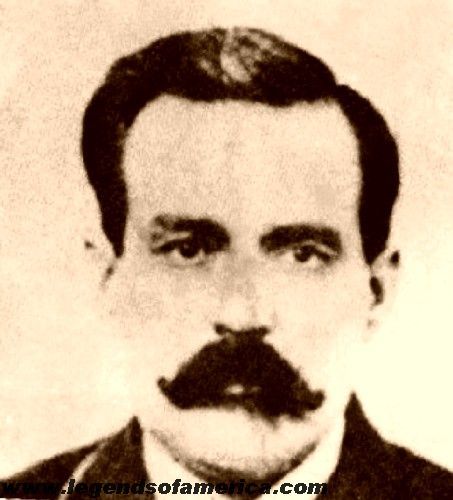Tom Black Jack Ketchum
- Tom 'Black Jack' Ketchum Tom Ketchum and His Gang Texas cowhands-turned-outlaws Tom and Sam Ketchum, along with range pals like David Atkins and Will Carver, robbed trains and became notorious in the Southwest.
- Tom and Sam Ketchum were never tried for the killings at the Plaza Largo arroyo, but Morris Herzstein reportedly was present in Clayton, New Mexico Territory to witness the hanging of Black Jack Ketchum in 1901.
- BLACK JACK KETCHUM LOSES HIS HEAD 4/26/1901 - The short and suicidal criminal career of 37-year-old Texas outlaw, Thomas Edward 'Black Jack' Ketchum ends in Union County, New Mexico, at the town of Clayton, with one of the most horrific executions in the history of the Old West.
- Ketcham Genealogy; Historical background. Ketchum Boys From the Handbook of Texas Online; The Spanish Peaks, in the Southern Colorado Rocky Mountains area Background. Explorers, lawmen, gunslingers, and mountain men with names like Kit Carson, Black Jack Ketchum, Wild Bill Hickok, John Freemont, Zane Grey, William Bent, and Bat Masterson traveled the area frequently.
Tom Black Jack Ketchum July 14, 2016 Farr and away: Wild Times with the Wild Bunch by Nancy Christofferson SOUTHERN COLORADO/NORTHERN NEW MEXICO — One hundred and seventeen years ago, a man from Huerfano County unfortunately made the national news.

Tom Black Jack Ketchum Execution Photos

First Train Robberies and Murders
Tom Ketchum was born in San Saba County, Texas. He left Texas in 1890, possibly after committing a crime. He worked as a cowboy in the Pecos River Valley of New Mexico, where by 1894, his older brother, Sam Ketchum, had joined him. Black Jack and a group of others were named as the robbers of an Atchison, Topeka and Santa Fe Railway train that was en route to Deming, New Mexico Territory in 1892 with a large payroll aboard. The gang supposedly robbed the train just outside of Nutt, New Mexico Territory, a water station twenty miles north of Deming. Black Jack and his gang would often visit the ranch of Herb Bassett, near Brown's Park, Colorado, who was known to have done business with several outlaws of the day, having supplied them with beef and fresh horses. Herb Bassett was the father of female outlaws Josie Bassett and Ann Bassett, who were girlfriends to several members of Butch Cassidy's Wild Bunch gang. One of Ann Bassett's boyfriends and future Wild Bunch gang member, Ben Kilpatrick, began riding with Black Jack's gang about that time. Outlaw 'Bronco Bill' Walters, later noted for the legend of his 'hidden loot' near Solomonville, Arizona, is also believed to have begun riding with the gang at this time.
The second major crime attributed to Tom was the murder of a neighbor, John N. 'Jap' Powers, in Tom Green County, Texas, on December 12, 1895. However, information at the Sutton Historical Society in Texas, says that Will Carver and Sam Ketchum were the ones actually accused of killing Powers in Knickerbocker, Texas. Fearing the law, they closed their joint saloon and gambling venture in San Angelo, and hit the outlaw trail. Within six months, Mrs. Powers and her lover, J. E. Wright, were arrested for the murder, but it was too late for Carver and the Ketchums.
By late 1895, outlaw Harvey 'Kid Curry' Logan and his brother Lonnie Curry were members of Black Jack's gang. However, in early 1896, a dispute concerning their share of robbery loot prompted the Currys to leave the gang.
It is alleged that Ketchum was involved with the February 1, 1896, disappearance and presumed murders of Albert Jennings Fountain and his son Henry Fountain of Las Cruces, New Mexico. In early June 1896, after working for the famed Bell Ranch in New Mexico, Tom and Sam Ketchum, and possibly others, robbed a combined store and post office at Liberty, New Mexico, northwest of present-day Tucumcari. According to contemporary accounts, the Ketchums rode into Liberty on June 12 and purchased supplies. That evening, a thunderstorm began, and they returned to the store, owned by Morris and Levi Herzstein, who invited them to take shelter.
Returning the next morning to open his store, Levi Herzstein found that both the store and post office had been burglarized. After gathering a posse, Herzstein set out on the outlaws' trail. The posse, composed of just four men, took the two outlaws by surprise in the Plaza Largo arroyo, where a shootout immediately began. Seconds later both Levi Herzstein and Hermenejildo Gallegos lay dead. Seeing his comrades fall, Anastacio Borgue turned his horse and rode out of the arroyo. Placido Gurulé, the fourth member of the posse, also survived to give an account. Gurulé said he had been struck by a .30-30 bullet that knocked him off of his horse. He landed on the ground with a blow that knocked the wind out of him. He lay in a semiconscious state as Black Jack Ketchum emptied his rifle into the bodies of Levi Herzstein and Hermenejildo Gallegos. Describing the event to his children and grandchildren, Gurulé would add, 'I knew if I moved a muscle I would be a dead man.' Tom and Sam Ketchum were never tried for the killings at the Plaza Largo arroyo, but Morris Herzstein reportedly was present in Clayton, New Mexico Territory to witness the hanging of Black Jack Ketchum in 1901.


Tom Black Jack Ketchum Biography

Tom Black Jack Ketchum Death
Morris Herzstein moved to Clayton shortly after the killing in Liberty, and finally into the 'Texas panhandle' area. This is memorialized by the inscription on a shoe brush: Herzstein's Clayton, New Mexico -- Dalhart, Texas. If it's from Herzstein's it's correct. Morris was the father of Albert Herzstein, who became one of the founders of Big 3 Industries in Houston, and is the man who helped the museum in Clayton to become a reality years later.